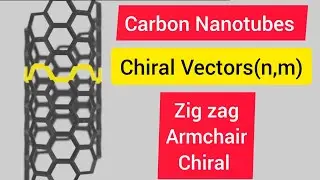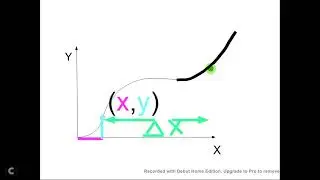Chiral vectors | Carbon Nanotubes (CNTs)
single-wall carbon nanotubes can be idealized as cutouts from a two-dimensional hexagonal lattice of carbon atoms rolled up to form a hollow cylinder.
Based on the way it is rolled, there can be different structures to the nanotubes.
if it is rolled in a way such that the cross section is zig zag, we call it Zig zag nanotube.
If it is rolled in a way such that the cross section is like this, it is called Armchair nanotube, because of the shape.
But, there can be many ways to roll a hexagonal sheet and it is not practical to name all of them.
So, we give each of them a pair of indices (n,m) called the chiral vector.
n is the column number and m is the row number.
A nanotube is said to have a chiral vector (n,m) if the hexagon (0,0) coincides with the hexagon (n,m) upon rolling.
For example in a zig zag nanotube, the hexagon (0,0) coincides with the hexagon (n,0).
Hence m=0 for a zig zag nanotube.
For an armchair nanotube, hexagon (0,0) coincides with the row where m=n.
All nanotubes except these two types are classified into what is called chiral nanotubes and can be identified with their chiral vector.
Refs:
1.https://physics.stackexchange.com/que...
2.https://en.wikipedia.org/wiki/Carbon_...

![[3] Chance's Starter Guide to Lords Mobile - Guild Showdown](https://images.mixrolikus.cc/video/2GU5OKDOrRk)

















